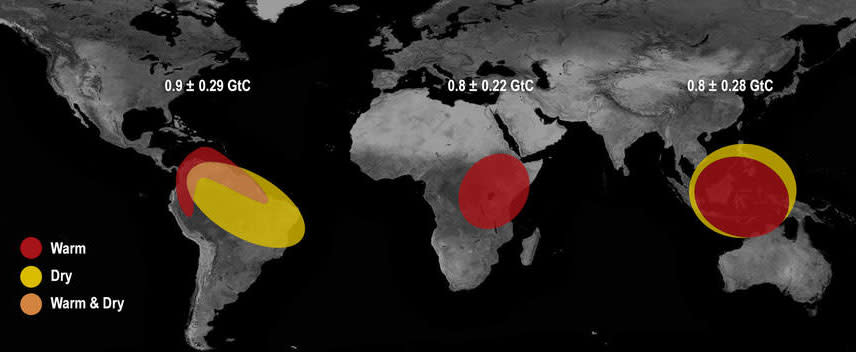Heat and drought led to the largest recorded spike in carbon levels
They were a result of the El Nino weather phenomenon.
In 2015 and 2016, NASA's Orbiting Carbon Observatory-2 (OCO-2) satellite recorded spikes in the levels of atmospheric carbon dioxide concentration. These were 50 percent larger than expected increases. Now, a series of new studies set to publish tomorrow in Science can tell us why. Eighty percent of the spike, or the equivalent of 2.5 gigatons of carbon, occurred because of natural processes due to drought and high temperatures in South America, Africa and Indonesia.
Specifically, the increase in carbon dioxide was due to the El Nino weather phenomenon, which scientists have long suspected. But they weren't able to pinpoint the precise mechanisms that led to the carbon dioxide increase until now. A team at NASA's Jet Propulsion Laboratory (JPL) led by Junjie Liu compared the 2015 data to readings taken in 2011 -- a year with a "normal" increase -- by the Japanese Greenhouse Gases Observing Satellite to figure it out.
The team found that the temperature and rainfall conditions brought about by El Nino dramatically affected these three regions. In South America, there was severe drought and hotter than normal temperatures because of the weather phenomenon. These conditions led to a lower level of photosynthesis, as trees and plants absorbed less carbon.
During that same time, in Africa, rainfall was normal but temperatures were higher than usual. This led to a higher decomposition rate for trees and plants, which resulted in an increase in carbon emissions. Indonesia also saw a dry year; its carbon spike was due to both peat and forest fires.
Annmarie Eldering, who is the OCO-2 deputy project scientist at JPL, said, "The team's findings imply that if future climate brings more or longer droughts, as the last El Nino did, more carbon dioxide may remain in the atmosphere, leading to a tendency to further warm Earth." Understanding how our planet's tropical areas will react to a warmer planet is crucial. We must be able to predict how the Earth will behave in the face of climate change, and this study is an important part of that research.



